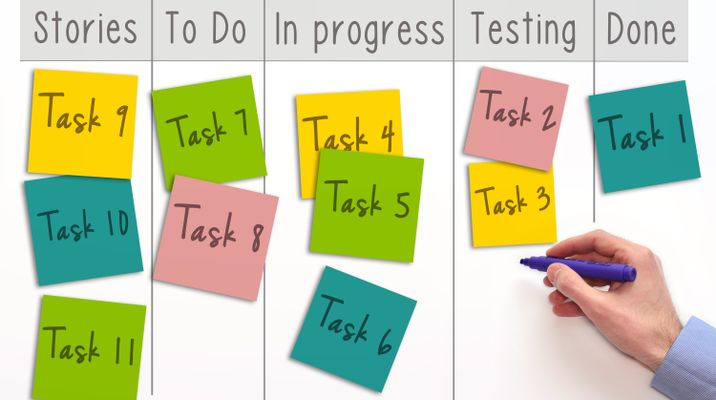ARTICLE SUMMARY
Managing any kind of business process by using Kanban is a smart way to go, so long as the rules are put in place effectively (yes you rebel, rules are good for you in this case).

Managing any kind of business process by using Kanban is a smart way to go, so long as the rules are put in place effectively (yes you rebel, rules are good for you in this case).
In order for a Kanban system to succeed, first and foremost, there has to be a strong amount of trust put in every member of the staff to handle their tasks in time and to get the job done within the standards required for the next group to take over with effectively.
To make this possible, the Kanban system has to be managed properly; here are some key rules that are easy to put in place and can make a defined, serious change to performance:
Simple rules for your Kanban Board
- The Kanban system ensures that precise amounts are being withdrawn, as specified by the settings that your business works to and is being asked for. As Kanban runs on a pull planning mechanism, it’s vital that only what is needed is ordered and then processed to ensure extremely efficient costs (see this post for more details on how Kanban works within a pull system);
- No items should ever be produced or moved to a new group outside of the Kanban system pre-established flow; it has to be the key process in everything, and it always has to be up-to-date with the latest changes and additions to the service. A failure to do so can make things harder to manage for other members of the team, and limit the chances of success later on down the line;
- The supplier is expected to produce items in the precise levels that are being asked for by the Kanban system; it should display and detail everything needed for each process so that no wastage occurs and to make sure that each member of the team is keeping up with the requires resources for every project being undertaken;
- Every process or task created and/or updated should be carried out with a Kanban Card alongside it – this means it will have detailed, intricate information on the card that comes along with everything that is being included with the process. This should never be neglected as it ensures safe, clear instructions for everything;
- Any incorrect or damaged resources will never be sent on to the next process; they will be returned and re-determined in the right phase; at the very start. This is very important as it ensures there is never an excess on any project, always delivering precision in every single event;
- Kanban systems will be reduced over time to minimize the amount of inventory space being used and to also find any gaps in the plan along the way to maximize productivity and ensure the process can be run as smoothly as it possibly can.
To make sure that this can be adhered to at all times, ensure that your Kanban system is easy to access and provides the right details for every single step of the way.
There should be no messing around and no guesswork when using a Kanban system; it makes sure that everything can be managed and dictated to in the same ways no matter what is being undertaken at any point in the process, always ensuring maximum return for minimal resource usage.
Make your Kanban easily accessible to your entire team with Pipefy!
Pipefy’s Task Management with Kanban Template was specially developed to help you manage your and your team’s tasks without breaking a sweat.
This template shows you in an organized and simplified manner what everyone is currently doing, what they have to do, and what is already done. It also highlights what are the priorities, what’s on time, what’s late, and what’s potentially creating bottlenecks.






